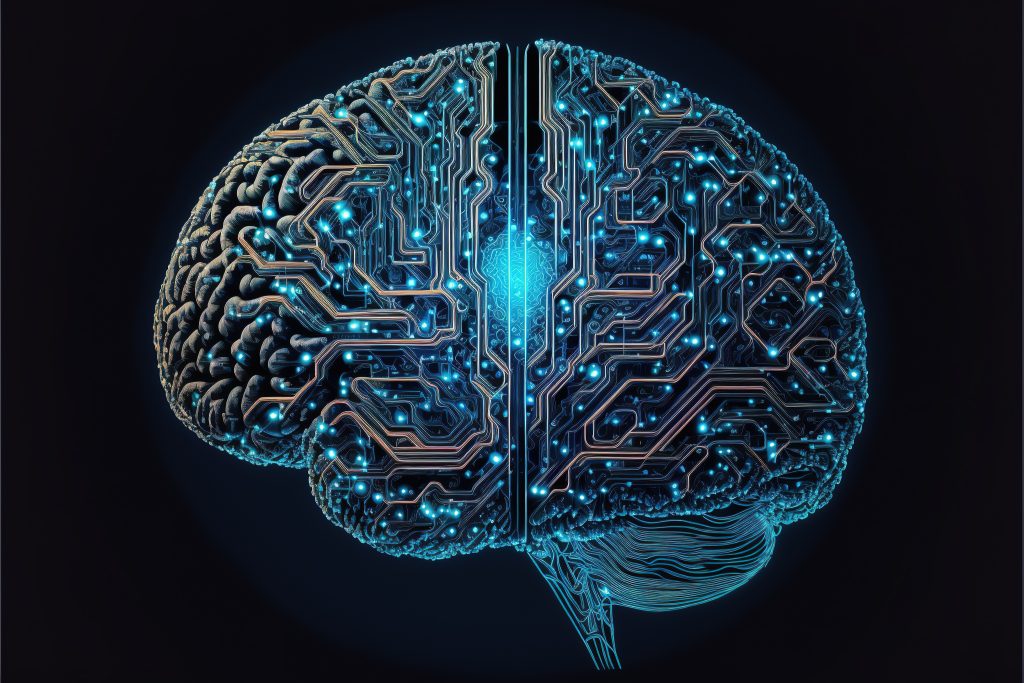
Imagine controlling a computer, robotic arm, or even a wheelchair with your thoughts. This is no longer science fiction—thanks to advancements in neuroprosthetics and brain-computer interfaces (BCIs), it’s becoming a reality. Look at Neuralink, it was founded by Elon Musk and they are pioneering technologies that restore mobility and communication for paralyzed patients, offering hope to millions. This article explores how BCIs work, their transformative potential, and the ethical challenges they bring to the forefront.
The Science Behind Brain-Computer Interfaces
How BCIs Bridge the Brain and Machines
BCIs are systems that translate neural signals into commands for external devices. They typically involve electrodes implanted in or placed on the brain to detect electrical activity. For example, Neuralink uses ultra-thin, flexible threads implanted by a robotic surgeon to record neural activity with unprecedented precision. AI algorithms then decode these signals, enabling users to control devices simply by thinking.
Restoring Mobility for Paralyzed Patients
One of the most promising applications of BCIs is restoring movement for individuals with spinal cord injuries or neurodegenerative diseases like ALS. In 2021, a paralyzed patient using a BCI developed by Synchron successfully tweeted by thought alone. Similarly, researchers at Johns Hopkins University enabled a quadriplegic man to control a robotic arm with his mind, allowing him to feed himself for the first time in years.
Communication Breakthroughs for the Speech-Impaired
Giving a Voice to the Voiceless

BCIs are revolutionizing communication for those who cannot speak. Neuralink recently demonstrated how a paralyzed patient could type words on a screen using only their thoughts. Similarly, BrainGate, a research consortium, enabled ALS patients to communicate by imagining handwriting, achieving typing speeds comparable to non-disabled individuals.
Beyond Text: Emotional Expression Through BCIs
Emerging technologies aim to restore not just words but emotional expression. For instance, Facebook’s Reality Labs (now Meta) explores BCIs that translate thoughts into emojis or even synthesized speech with emotional inflexions. It could transform how speech-impaired individuals connect with loved ones.
The Role of AI in Enhancing BCIsMachine Learning for Precision
Decoding neural signals is a complex task. Fortunately, Machine learning algorithms analyze vast amounts of brain data to identify patterns, improving accuracy. For example, Neuralink’s AI adapts to individual users, learning their unique neural “language” to enhance control and reduce errors.
Real-Time Feedback and Learning
BCIs equipped with AI can provide real-time feedback, helping users refine their control. For instance, a patient learning to move a robotic arm receives visual and sensory feedback, accelerating the learning process. This iterative loop between the brain and machine is key to seamless integration.
Ethical and Societal Implications
Privacy Concerns and Data Security
BCIs collect highly sensitive data—essentially reading users’ thoughts. Ensuring this data is secure and private is paramount. Unauthorized access could lead to unprecedented breaches, from stealing personal information to manipulating thoughts. Companies like Neuralink must prioritize encryption and transparent data policies to build trust.
Accessibility and Equity
While BCIs hold immense promise, their high costs could limit access to wealthy individuals or developed nations. Ensuring equitable distribution is critical to avoid widening the gap between the privileged and underserved. Governments and NGOs must collaborate to subsidize costs and expand access.
Ethical Use and Regulation
The potential for misuse is significant. For example, BCIs could be weaponized for surveillance or mind control. Robust regulations are needed to govern their development and use. The FDA has approved some BCI devices for medical use, but global standards are still evolving.
The Future of Neuroprosthetics and BCIs
Beyond Medical Use
Brain-computer interfaces (BCIs) are mainly used for medical purposes, but their potential goes beyond that. People could control video games with their thoughts, and workers might use technology to improve their performance. However, these advancements raise critical ethical issues about fairness and how they could enhance brain function.
Merging Humans and Machines
The ultimate vision of BCIs is seamless integration between humans and machines. Elon Musk envisions a future where BCIs like Neuralink enable humans to keep pace with AI, enhance cognitive abilities, and even enable telepathic communication. While this remains speculative, it underscores the technology’s transformative potential.
Conclusion: A New Era of Human Potential
Neuroprosthetics and mind-controlled devices are unlocking possibilities once confined to the realm of imagination. For paralyzed patients, BCIs offer a lifeline, restoring mobility and communication. However, as we embrace this technology, we must address ethical challenges to ensure it benefits humanity equitably and responsibly.
Explore the Future of BCIs with Justwebtech
Stay ahead of the curve with Justwebtech’s insights on emerging technologies. Contact us for expert analysis on “Ethical AI and Neurotechnology” to navigate this transformative landscape.

Leave a Reply